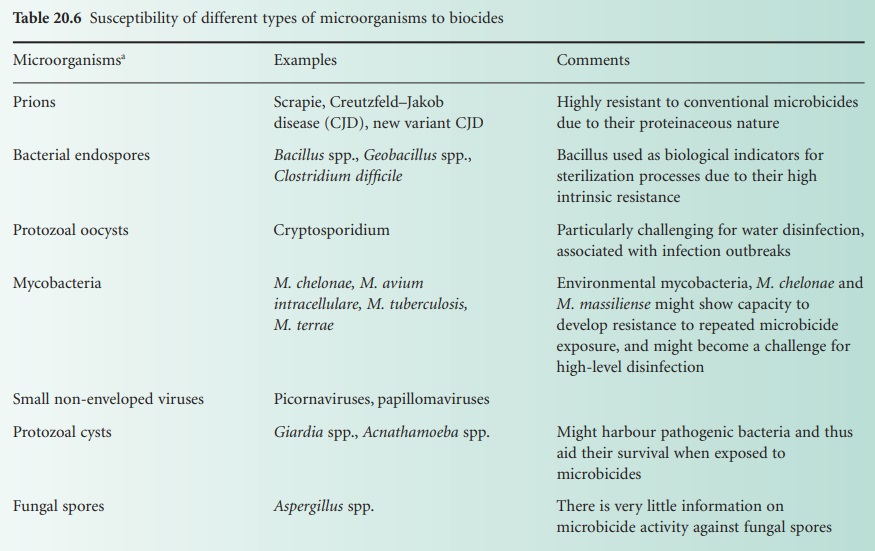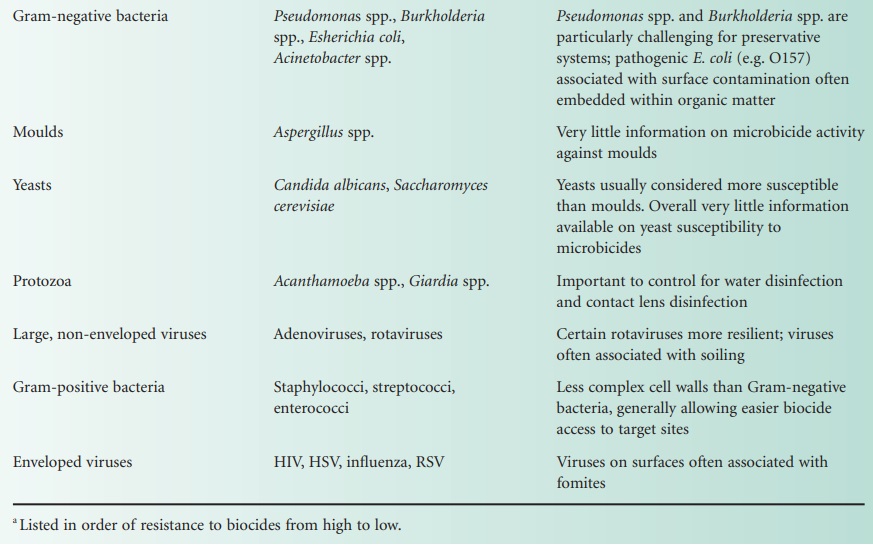Inactivation of Prions
| Home | | Pharmaceutical Microbiology | | Pharmaceutical Microbiology |Chapter: Pharmaceutical Microbiology : Non-Antibiotic Antimicrobial Agents: Mode Of Action And Resistance
Prions are the cause of transmissible spongiform encephalopathies, a group of fatal neurological diseases such as scrapie, Creutzfeld–Jakob disease (CJD), new variant Creutzfeld–Jakob disease (vCJD), bovine spongiform encephalopathy (BSE), kuru and Gerstman–Straussler– Sckeinker syndrome (GSS). It is now widely accepted that prions are an abnormal, protease-resistant form of a normal harmless host protein (PrP).
INACTIVATION OF PRIONS
Prions are the cause of transmissible spongiform encephalopathies, a group of fatal neurological diseases such as scrapie, Creutzfeld–Jakob disease (CJD), new
variant Creutzfeld–Jakob disease (vCJD), bovine spongiform encephalopathy (BSE), kuru and Gerstman–Straussler–
Sckeinker syndrome (GSS).
It is now widely accepted
that prions are
an abnormal, protease-resistant form of a normal harmless host protein
(PrP). The prion protein
undergoes a
conformational change from four α-helices
to an infectious β-sheet
form. These conformational changes cause degeneration of nervous tissue which, under the microscope, exhibits a sponge-like appearance. Prions are found in association with a wide range of tissues and are
of particular significance in a pharmaceutical context because of the need to decontaminate surgical or other hospital equipment that has been in contact
with such diseased tissue. Prions
are very stable
in the environment, may form aggregates, and are
highly resistant to conventional disinfection and sterilization methodologies.
Prions are considered highly resistant to various
types of biocidal
products (formulations) (Table 20.6);
this includes strong acids (e.g. 8 M hydrochloric acid for 1 hour), alkylating
agents (e.g. glutaraldehyde, βpropiolactone),
iodine and iodophors, phenolics, alcohols, oxidizing agents in their
liquid form (e.g.
hydrogen peroxide, peracetic acid)
and proteolytic enzymes. Mild detergents were
also reported inactive although sodium dodecyl sulphate (SDS) has shown
some activity.


Alkali (e.g.
1 M NaOH for 1 hour)
is usually effective against prions and as such has been widely used in the laboratory,
industrial and clinical
environments. However, alkali efficacy might
depend on the prion’s
nature (host), and residual
prion infectivity following treatment has been documented. More aggressive treatments combining alkali and gravity-displacement autoclaving at 121 °C for 30 minutes have been used. The use of sodium
hypochlorite containing 20 000 ppm of available chlorine for 1 hour has been recommended for use in practice.
Sodium dichloroisocyanurate (NaDCC) might not be equally effective against some prion proteins, as some infectivity following treatment has been reported. Hydrogen peroxide in a gaseous form
has been shown
to be active against
prions, although reported
efficacy to date depends
much on the type of vapourized hydrogen peroxide generator used.
Formulations play
an important role
in prion decontamination. Complex formulations containing
liquid hydrogen peroxide and copper have been shown to be active against prions.
The combination of alkali, chelating agents, surfactants and various
buffers have been
particularly effective as they combined
prion removal from surfaces and prion inactivation. A combination of proteinase
K, pronase
and SDS has been shown to degrade
PrPres material from highly
concentrated vCJD-infected brain preparations.
Slight changes in formulations might bring
a loss of efficacy
against prions, however, and new formulations need to be carefully assessed
for antiprion activity.
Related Topics
